The proclaimed Famous New Media Artist Jeremy Bailey presents us with the Next Big Thing at Pari Nadimi Gallery. The Toronto based artist, represented by Pari Nadimi, has well travelled art works appearing at the ICA and Southbank Centre in London, The Stedelijk Museum and Mediamatic in Amsterdam, the Tate Liverpool and the New Museum in New York to name a few. Bailey’s works are a departure from first wave New Media art. His works do expose some underlying systems of our technologies, and even occasionally appropriate symbols from their many interfaces, but his works also incorporate performance. Bailey’s practice as a New Media artist uses parody and joke to undermine the space between our bodies and screens as we perform the maneuvers required using them.
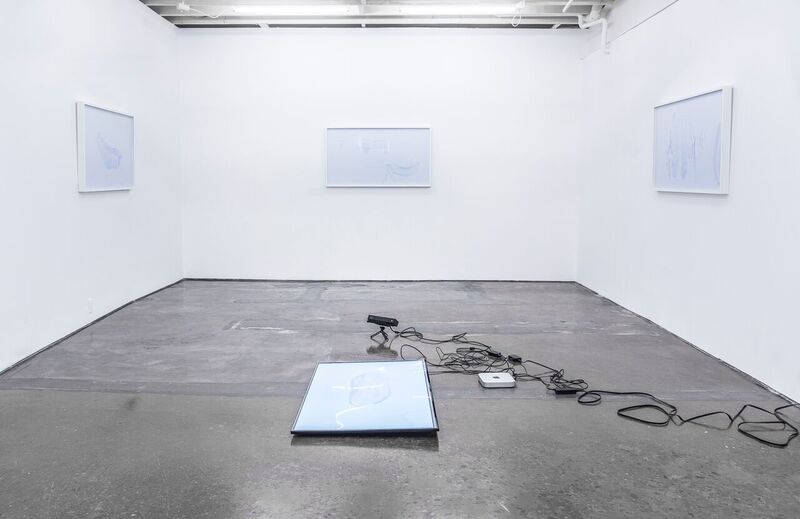 Installation view of Jeremy Bailey, Next Big Thing at Pari Nadimi Gallery, 2016. Image courtesy of Pari Nadimi Gallery
Installation view of Jeremy Bailey, Next Big Thing at Pari Nadimi Gallery, 2016. Image courtesy of Pari Nadimi Gallery
Hung on the gallery walls are five printed works of abstract blobs on a pleasantly lilac background, and identified as ‘gestural paintings’. The thin layers of shading that compose the forms seem deceptively like watercolors, but given the glossy sheen of the paper surface, the works are more probably printed to resemble the reflective qualities of a screen.
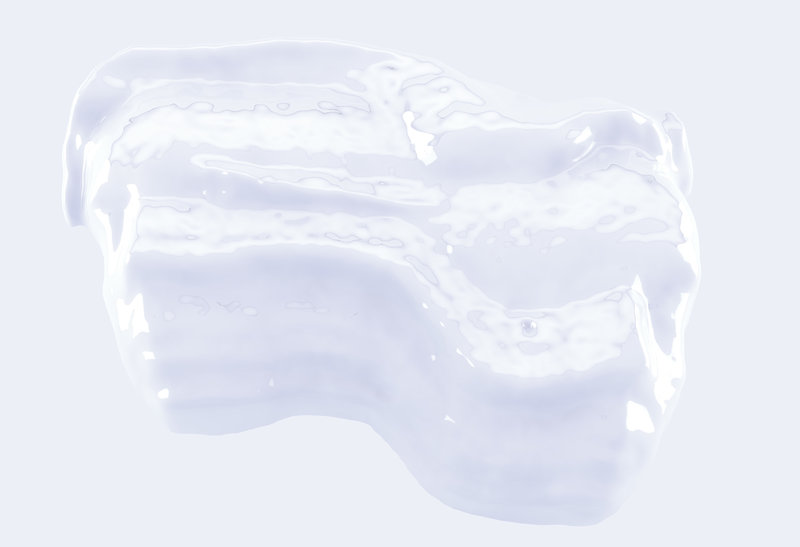 Jeremy Bailey, Head Gesture I, 2016, C-Print, 29″ x 50”. Image courtesy of Pari Nadimi Gallery
Jeremy Bailey, Head Gesture I, 2016, C-Print, 29″ x 50”. Image courtesy of Pari Nadimi Gallery
On the floor of Pari Nadimi Gallery is a TV, laid on its back, of approximately the same colour as the background. On a busy night such as the opening reception, a form or forms constantly pulse against the lilac screen like something bobbing to the tense surface of water or a body pressing against glass. Every so often the forms on the screen show signs that they are human bodies having hands and faces. Next to the screen, on the floor, is a device (which to my untechnologically savvy eye looked like a speaker) that captures the movements of people moving through the space, their bodies making temporary marks on the screen like paint brushes, but also as subjects. We might imagine that our bodies take these forms as we press against the screens of our devices, sending signals through touch to find an old picture or send an email; our bodies as instruments and signs.
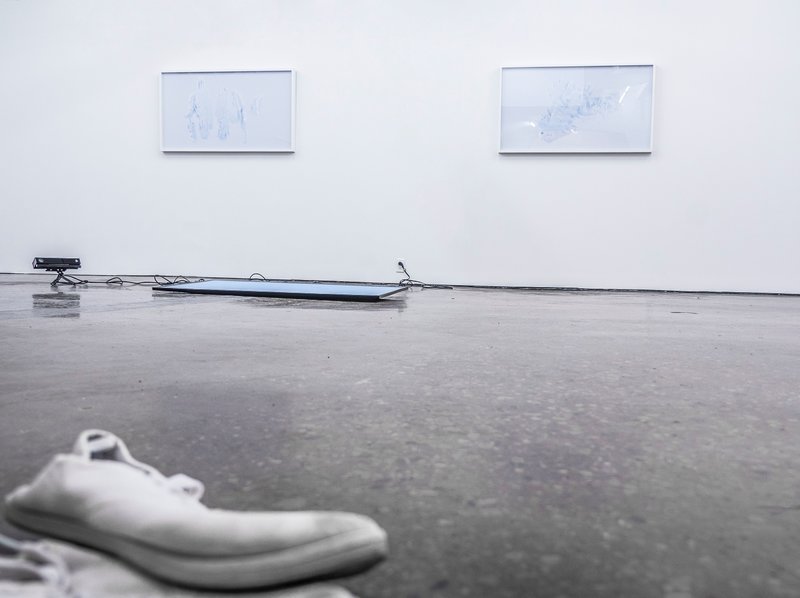 Installation view of Jeremy Bailey, Next Big Thing at Pari Nadimi Gallery, 2016. Image courtesy of Pari Nadimi Gallery
Installation view of Jeremy Bailey, Next Big Thing at Pari Nadimi Gallery, 2016. Image courtesy of Pari Nadimi Gallery
The juxtaposition of the printed works – screen shots of past movement on the monitor – with the active interface requires us to react and then reflect on the evidence of our actions. Just as Roland Barthes understood the photograph as a representation for the death of a moment, the captured and rendered form in Bailey’s work represents inactivity. In the online world, what is ‘singing off’ if not a death, a moment of unrefreshed data? There is another death inherent in Bailey’s exhibition: the death of our online/performative egos. Rosalind Krauss in her text ‘Video: The Aesthetics of Narcissism’ (October, no. 1, Spring 1976, 181.) describes the camera and monitor as parentheses for centering the performative body. The performers are able to reflect on their performance as it is occurring, facing the death of each moment as it passes, eventually enacting a history. Krauss understands the self-reflectivity as evidence of narcissism.
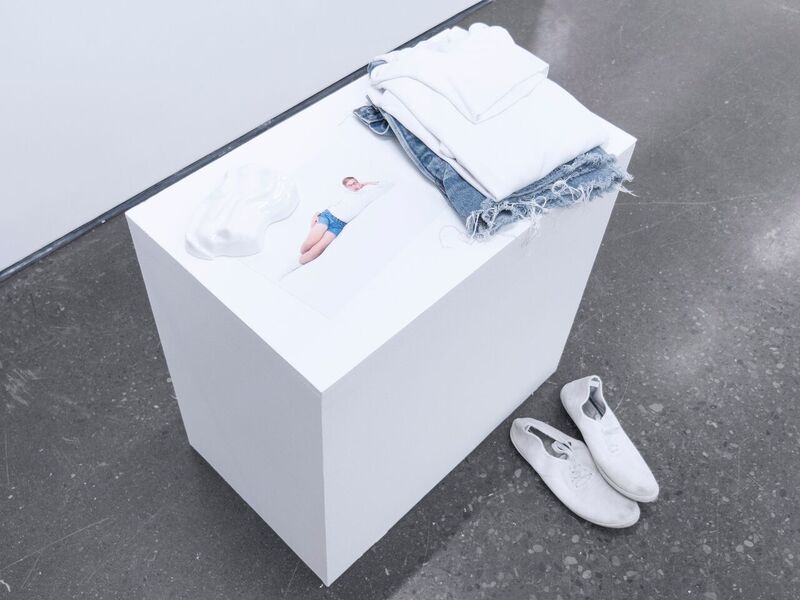 Installation view of Jeremy Bailey, Next Big Thing at Pari Nadimi Gallery, 2016. Image courtesy of Pari Nadimi Gallery
Installation view of Jeremy Bailey, Next Big Thing at Pari Nadimi Gallery, 2016. Image courtesy of Pari Nadimi Gallery
The parentheses defined by Krauss still exist in our age of computers as motion sensor devices and screens. In Krauss’ parentheses, the performers may either feel the medium as an extension of themselves or their actions may be defined by the result on screen. Bailey extends Krauss’ theory to a world of screens defined by the Internet and computers in his essay ‘Performance for the computer’ (Documents of Contemporary Art: Moving Image, 2006, 124). In a cloud interface where these narcissistic interactions live on, we might be more inclined, as a performer, to dominate the medium, impress on it our egos, an impression of ourselves, one that can go on representing us in the cloud. In doing this, we risk not the death but the loss of our egos. Bailey sees the risk that the computer becomes us and we become ‘users’.
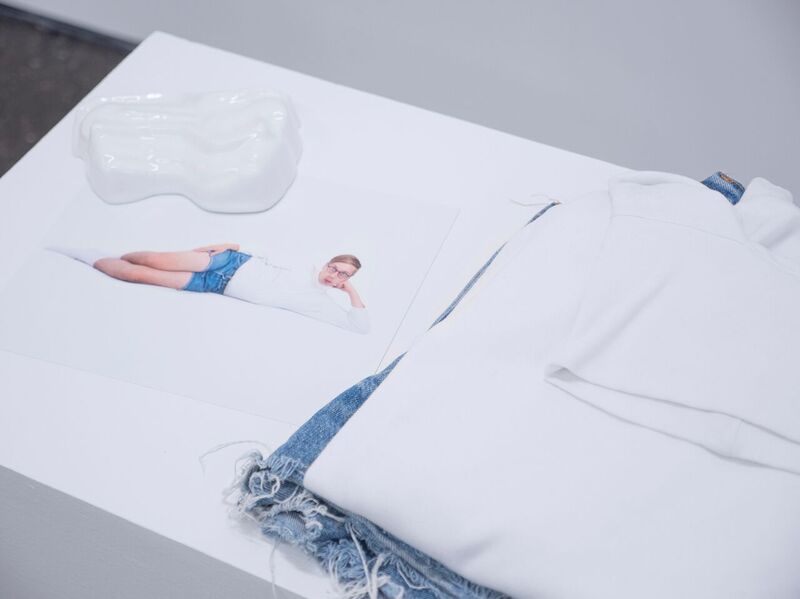 Installation view of Jeremy Bailey, Next Big Thing at Pari Nadimi Gallery, 2016. Image courtesy of Pari Nadimi Gallery
Installation view of Jeremy Bailey, Next Big Thing at Pari Nadimi Gallery, 2016. Image courtesy of Pari Nadimi Gallery
Bailey manages to maintain his ego by doing what computers cannot. He laughs at himself and his narcissism, and invites us to laugh with him. I recommend that we honor the jocose and satire of his practice by making faces at the screen on the floor of Pari Nadimi Gallery. Being together through a common, physical interface may even eliminate our egos to form a communal lilac identity. Bailey’s interface is an opportunity to actively belong to an existential, digital blanket.
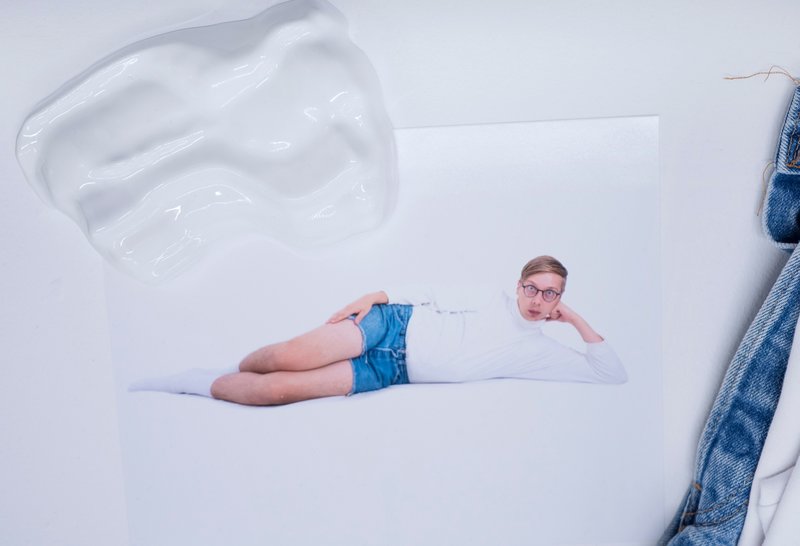 Installation view of Jeremy Bailey, Next Big Thing at Pari Nadimi Gallery, 2016. Image courtesy of Pari Nadimi Gallery
Installation view of Jeremy Bailey, Next Big Thing at Pari Nadimi Gallery, 2016. Image courtesy of Pari Nadimi Gallery
Alice Pelot
*Exhibition information: April 21 – July 2, 2016, Pari Nadimi Gallery, 254 Niagara Street, Toronto. Gallery hours: Wed – Sat, 12 – 5 pm.
